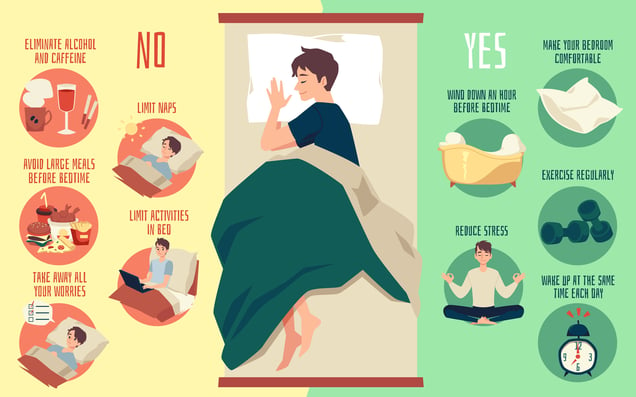Fatigue – that heavy-eyed, sluggish feeling we all experience – isn’t just a personal inconvenience; it’s a significant workplace safety concern.
When employees are chronically tired, their alertness, focus, and reaction times suffer, potentially leading to accidents, injuries, and even fatalities. This article explores the dangers of fatigue in the workplace and equips you with strategies to combat tiredness and maintain optimal energy levels throughout the workday.
The Warning Signs of Fatigue
Fatigue manifests in various ways, both physical and mental. Recognizing these signs is crucial for both employees and employers:
- Persistent Tiredness: A constant feeling of exhaustion, even after a night’s sleep, is a telltale sign of fatigue. This unrelenting tiredness can make it difficult to get through the day’s tasks and can negatively impact motivation and mood.
- Decreased Alertness: Struggling to concentrate, feeling drowsy, or experiencing frequent daydreams are indicators of diminished alertness. You might find yourself needing to reread emails or instructions multiple times, or having difficulty recalling recent information. Once routine tasks may now require a significant effort to focus and complete.
- Slow Reaction Times: Fatigue can significantly impair reaction times, increasing the risk of accidents when operating machinery or performing safety-sensitive tasks. This slowed response time can be particularly dangerous in jobs that require quick reflexes, such as driving, working on assembly lines, or operating heavy equipment.
- Poor Decision-Making: Tiredness can cloud judgment and lead to making risky decisions that could have serious consequences. You might find yourself overlooking important details, taking unnecessary shortcuts, or failing to properly assess potential hazards in your work environment.
- Irritability and Mood Swings: Fatigue can manifest as increased frustration, impatience, and emotional volatility. Minor inconveniences can feel overwhelming, and you might find yourself snapping at colleagues or having difficulty controlling your emotions.
- Changes in Sleep Patterns: Difficulty falling asleep, restless sleep, or waking up feeling unrefreshed are all signs of sleep disruption, often a major contributor to fatigue. You might toss and turn throughout the night, wake up frequently, or experience vivid dreams that disrupt your sleep quality. Even after a full night’s sleep, you might still feel tired and sluggish the next day.
- Physical Symptoms: In addition to the mental and emotional signs, fatigue can also manifest through physical symptoms such as headaches, muscle aches, and digestive problems. You might experience difficulty relaxing, have a weakened immune system, and be more susceptible to illnesses.
It’s important to note that some of these signs can also be symptoms of underlying medical conditions. If you are experiencing persistent fatigue along with other concerning symptoms, it’s crucial to consult with a healthcare professional to rule out any underlying medical issues. However, by recognizing the warning signs of fatigue and taking proactive steps to manage it, we can create a safer and healthier work environment for everyone.
Combating Tiredness: The Power of Lifestyle Choices
The good news is that fatigue is often manageable through healthy lifestyle choices. Here’s a deeper dive into how these choices can significantly boost your energy levels and keep you feeling your best at work:
Prioritize Sleep: Aim for 7-8 hours of quality sleep each night. Quality sleep goes beyond just the number of hours. Additionally, consider the following ways to ensure your get restful sleep:
- Establish a Regular Sleep Schedule: Go to bed and wake up at consistent times each day, even on weekends. This helps regulate your body’s natural sleep-wake cycle, known as your circadian rhythm.
- Create a Relaxing Bedtime Routine: Wind down before bed with calming activities like reading, taking a warm bath, or practicing relaxation techniques like deep breathing or meditation. Avoid screen time for at least an hour before bed, as the blue light emitted from electronic devices can interfere with sleep.
- Optimize Your Sleep Environment: Ensure your bedroom is dark, quiet, and cool. Invest in blackout curtains, an earplug mask, and comfortable bedding to create a sleep-conducive environment.
Balanced Nutrition: Fuel your body with nutritious foods that provide sustained energy throughout the day. The key to doing this involves the following factors:
- Eat Regular Meals and Snacks: Don’t skip meals, and aim for small, balanced meals and snacks throughout the day to maintain stable blood sugar levels. Avoid sugary snacks and processed foods that can cause energy crashes.
- Focus on Complex Carbohydrates: Complex carbohydrates, such as whole grains, fruits, and vegetables, provide a slow and steady release of energy. Include plenty of these in your diet to keep your energy levels up throughout the morning and afternoon.
- Lean Protein: Include lean protein sources like fish, chicken, beans, and lentils in your meals and snacks. Protein helps you feel full and satisfied, preventing energy dips.
- Healthy Fats: Don’t be afraid of healthy fats like those found in avocados, nuts, and seeds. Healthy fats play a role in hormone regulation and can contribute to feelings of satiety and sustained energy.
- Stay Hydrated: Dehydration can significantly contribute to fatigue. Make sure to drink plenty of water throughout the day to stay alert and energized. Aim for eight glasses of water per day, but adjust based on your activity level and climate.
Regular Exercise: Physical activity, even moderate exercise for 30 minutes most days of the week, can boost energy levels and improve sleep quality. Here’s how exercise combats fatigue:
- Increases Energy Production: Exercise improves your body’s ability to use oxygen, which translates to increased energy production at the cellular level.
- Improves Sleep Quality: Regular exercise can help you fall asleep faster, sleep more soundly, and wake up feeling more refreshed.
- Reduces Stress: Exercise is a natural stress reliever, and chronic stress can be a major contributor to fatigue.
Manage Stress: Chronic stress can wreak havoc on your sleep and energy levels. Here are some strategies for developing healthy coping mechanisms for managing stress:
- Identify Stressors: The first step to managing stress is pinpointing the sources of your stress. Is it your workload, your commute, or personal life challenges? Once you identify your stressors, you can develop strategies to address them.
- Relaxation Techniques: Practice relaxation techniques like yoga, meditation, or deep breathing exercises to help manage stress and promote feelings of calm.
- Time Management: Feeling overwhelmed by your workload can be a significant stressor. Develop effective time management skills to prioritize tasks, delegate when possible, and avoid procrastination.
- Maintain a Healthy Work-Life Balance: Make time for activities you enjoy outside of work. Whether it’s spending time with loved ones, pursuing hobbies, or getting outdoors, ensure you have time to disconnect from work and recharge.

The Role of Employers in Promoting Fatigue Management
Employers play a crucial role in fostering a work environment that prioritizes employee well-being and combats fatigue. Here are some strategies to consider:
- Flexible Work Schedules: Offering flexible work arrangements, such as remote work options or compressed workweeks, can allow employees to manage their schedules and prioritize sleep.
- Clear Communication: Encourage open communication about fatigue. Employees should feel comfortable discussing their fatigue levels and requesting adjustments to their workload or schedule if needed.
- Promote Healthy Habits: Provide educational resources about the importance of sleep, nutrition, and exercise for managing fatigue. Offer on-site yoga or fitness classes, or partner with local gyms for discounted memberships.
- Ergonomics: Ensure workstations are ergonomically designed to minimize physical discomfort and fatigue.
- Limit Overtime: Excessive overtime can significantly contribute to employee fatigue. Explore workload distribution strategies or hiring additional staff to reduce reliance on extensive overtime.
The Final Word on Fatigue Management in the Workplace
Fatigue is a prevalent challenge in the workplace, but it’s not an inevitable consequence of work. By recognizing the signs of fatigue, prioritizing healthy lifestyle choices, and fostering a supportive work environment, we can create a culture of well-being where employees have the tools and resources to combat tiredness and remain energized throughout the workday. Remember, a well-rested and energized workforce is a safer, more productive, and ultimately, a happier workforce. Let’s prioritize fatigue management and pave the way for a thriving work environment where everyone can perform at their best.

